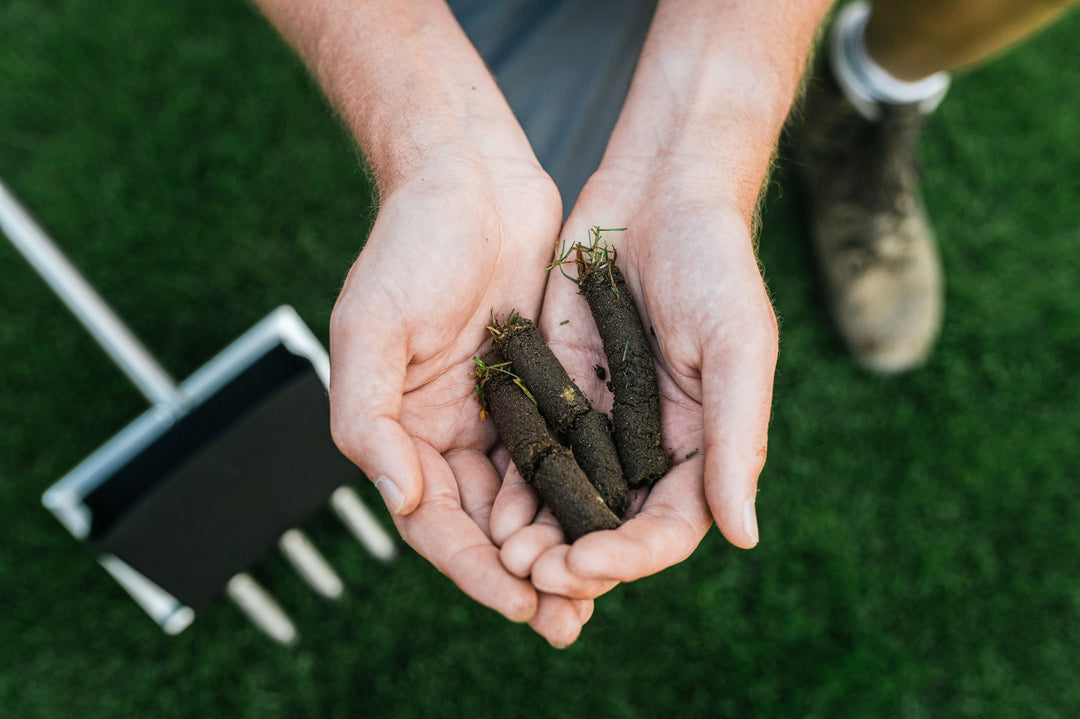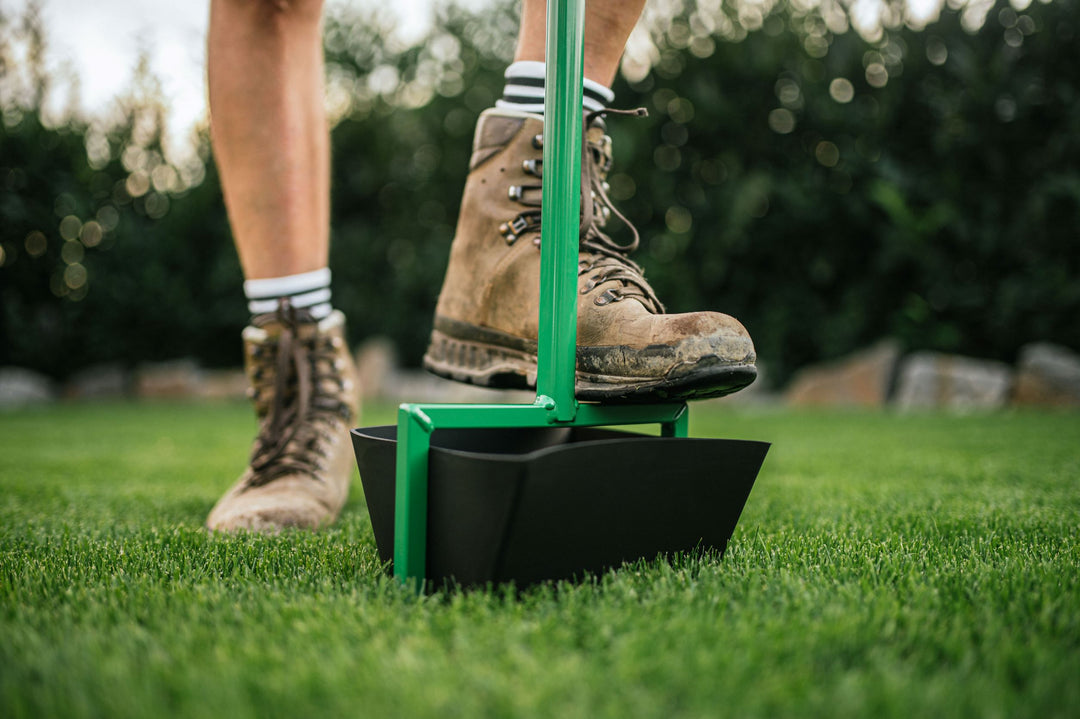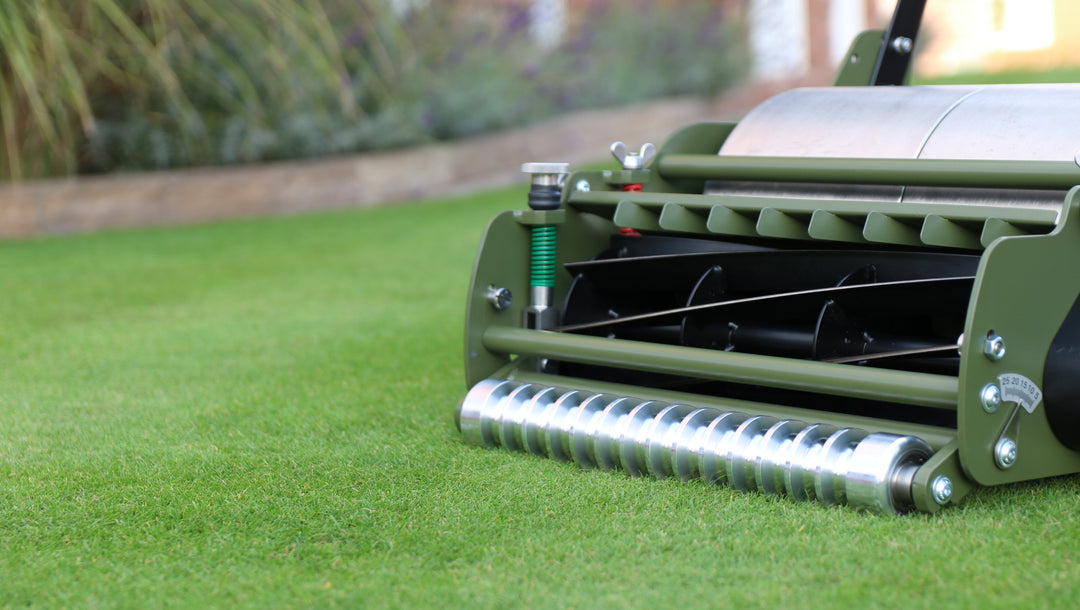Who doesn't know it: the first warm rays of sun awaken the desire for gardening. The lawn has more or less suffered after the winter and you want to have a great appearance again as soon as possible. Many unfortunately fall into pure actionism too early: Aerification, sands, verticulation - the result is additional stress for the grasses and thus allows unwanted herbs and grasses to gain a foothold on the lawn. When the spring sun warms the ground, one thing should be done first and foremost: mowing. If you like, you can also set up lying grasses gently, everything else has time. When is the right time to start the season?

Many paths lead to the goal
When can I start?
There are different temperature sum models and you can depend on the soil temperature (grass growth from approx. 5°C). Alternatively, you can simply take a look at the nature in the area – the pointer plants from phenology are the best reference point for me. In the phenological calendar, the year is divided into 12 seasons, if you follow those, I think you are much better off than summing up temperatures. Due to climate change, even the "100-year calendar" is only of limited significance.
Phenological early spring starts with the hazelnut blossom – at this point your lawn should show easy growth – so it's time to mow. Depending on the cutting height, however, the frequency will be in a 4-8 week rhythm. Now would also be the ideal time to carry out a soil analysis in order to select suitable fertilizers for the following year and, if necessary, adjust the pH value. Liming is only necessary if the soil is clearly too acidic. If you had problems with waterlogging in winter, you should use theLawnclawair in the ground.
The first fertilization
For the first spring (flowering of the forsythia) you can fertilize for the first time - it is important to pay attention to the soil temperature: mineral fertilizers (immediately soluble) need at least 6 degrees soil temperature, organic fertilizers better 10 degrees (these must first be converted into the soil to be available to plants). If you fertilize too early, you promote unwanted grasses, especially the Poa Annua, which ramps up its metabolism very early - so if in doubt, it's better to wait!
You should also choose your fertilizer wisely and not fertilize according to the motto: "a lot helps a lot, even more is even better".
The first spring is characterized by the fact that even longer cold periods can follow, if you use the wrong fertilizer now and also dose it too high, you promote undesirable strong growth and thus the susceptibility of the grasses to disease. A good lawn fertilizer should therefore release the nitrogen slowly and therefore contain at most a little nitrate nitrogen. Potassium should be dosed about half as high as nitrogen in spring – it's best to pay attention to your soil analysis here. Phosphorus supports root growth, but it is relatively common to see analyses that show extremely high P values.
This achieves exactly the opposite: an excessive supply leads to significantly less branched root systems, hinders the absorption of other nutrients and promotes flower formation (Poa Annua in particular benefits here). The grass growth is now noticeably increasing, so you should also mow more often, please always stick to the rule of thirds: by a radical short cut you send the grasses into a kind of emergency running program. You destroy a lot of leaf mass, which is essential for photosynthesis. To compensate for these losses, massive amounts of new leaf mass are formed at the expense of root growth. The result is (often) a dense lawn that is not resistant.
THE MAIN SPRING IS THE TIME FOR LARGER MEASURES
The lilac blossom marks the beginning of the main spring and above- and below-ground growth reaches its peak. Now is the right time for major action. However, scarifying is rarely necessary, as soil life usually ensures that there is never too much felt. If you have problems with soil compaction, you should now use the Lawnpecker Aerify. Reseeding helps to close any gaps that may exist and to ensure an easy Topdressing helps to keep the floor loose and even out slight unevenness. Please do not bury the lawn under the sand, rather sand more often, but little. For final distribution, the Levelrake wonderful.
With the onset of elderflowering, spring ends and early summer begins.






